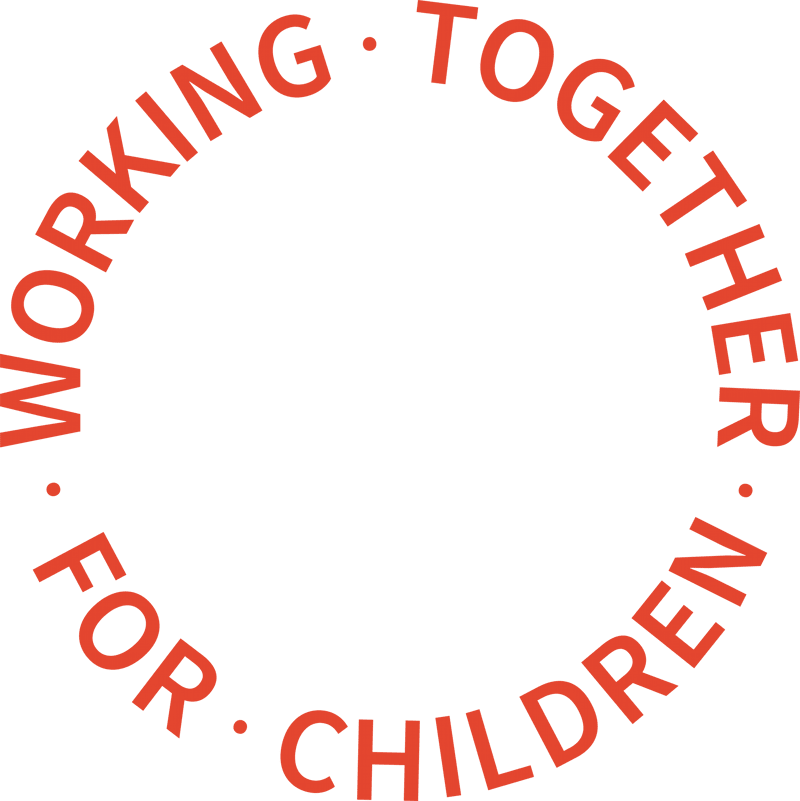The government recently announced a package of measures aimed at tackling CSE and reported its progress to date along with its plans going forward.
The government has updated the definition of Child Sexual Exploitation and announced funding to help tackle CSE.
The Home Office announced new funding for the National Crime Agency to tackle online child sexual exploitation, money for organisations working to protect children at risk of trafficking and the launch of Independent Child Trafficking Advocates (ICTAs) in three early-adopter sites across the UK.
Home secretary Amber Rudd also unveiled the launch of a new Centre of Expertise on child sexual abuse.
Ms Rudd said: “Children should be able to grow up free from the horrors of sexual abuse, exploitation and trafficking. Something that should go without saying, but sadly that’s not the case.
“This government has done more than any other to tackle these horrific offences. We have increased support for victims of sexual abuse, invested in training and technology to improve law enforcement’s response to abuse both on and offline, and brought in a tougher inspection regime to ensure all front-line professions are meeting their child protection duties.
“But there is more to do, the measures I am announcing today will further improve our ability to protect children, and under my watch I am determined to bring those that would try to steal their childhood to justice,” she added.
Supporting practitioners
The definition of child sexual exploitation has been updated to:
“Child sexual exploitation is a form of child sexual abuse. It occurs where an individual or group takes advantage of an imbalance of power to coerce, manipulate or deceive a child or young person under the age of 18 into sexual activity (a) in exchange for something the victim needs or wants, and/or (b) for the financial advantage or increased status of the perpetrator or facilitator. The victim may have been sexually exploited even if the sexual activity appears consensual. Child sexual exploitation does not always involve physical contact; it can also occur through the use of technology.”
A report ‘Child sexual exploitation Definition and a guide for practitioners, local leaders and decision makers working to protect children from child sexual exploitation’ explains that child sexual exploitation is a complex form of abuse and it can be difficult for those working with children to identify and assess.
“The indicators for child sexual exploitation can sometimes be mistaken for ‘normal adolescent behaviours’. It requires knowledge, skills, professional curiosity and an assessment which analyses the risk factors and personal circumstances of individual children to ensure that the signs and symptoms are interpreted correctly and appropriate support is given,” adds the guide.
However, it highlights that one of the key factors found in most cases of child sexual exploitation is the presence of some form of exchange (sexual activity in return for something); for the victim and/or perpetrator or facilitator.
Where it is the victim who is offered, promised or given something they need or want, the exchange can include both tangible (such as money, drugs or alcohol) and intangible rewards (such as status, protection or perceived receipt of love or affection). It is critical to remember the unequal power dynamic within which this exchange occurs and to remember that the receipt of something by a child/young person does not make them any less of a victim, adds the guide.
The guide for practitioners states that any child can become a victim of child sexual exploitation and while children aged 12-15 years of age are most at risk of child sexual exploitation, victims as young as 8 have been identified, particularly in relation to online concerns. Though young females tend to experience CSE the most, boys are also at risk.
Crimes and vulnerabilities
Practitioners are reminded that sexual exploitation is often linked to other issues in the life of a child or young person, or in the wider community context. Sexual exploitation may have links to other crimes such as:
- Child trafficking;
- Domestic abuse;
- Sexual violence in intimate relationships;
- Grooming (including online grooming);
- Abusive images of children and their distribution;
- Drugs-related offences;
- Gang-related activity;
- Immigration-related offences; and
- Domestic servitude.
Other vulnerabilities are examples of the types of things children can experience that might make them more susceptible to child sexual exploitation:
- Having a prior experience of neglect, physical and/or sexual abuse;
- Lack of a safe/stable home environment, now or in the past (domestic violence or parental substance misuse, mental health issues or criminality, for example);
- Recent bereavement or loss;
- Social isolation or social difficulties;
- Absence of a safe environment to explore sexuality;
- Economic vulnerability;
- Homelessness or insecure accommodation status;
- Connections with other children and young people who are being sexually exploited;
- Family members or other connections involved in adult sex work;
- Having a physical or learning disability;
- Being in care (particularly those in residential care and those with interrupted care histories); and
- Sexual identity.
The guide also lists potential risk factors that practitioners should be aware of including excessive receipt of texts/phone calls, acquisition of money, clothes or mobile phones without plausible explanation; gang-association; relationships with controlling or significantly older individuals or groups and leaving home/care without explanation and persistently going missing or returning late.
“Practitioners should also remain open to the fact that child sexual exploitation can occur without any of these risk indicators being obviously present,” said the guide.
The report makes it clear that child sexual exploitation is never the victim’s fault and all children and young people have a right to be safe and should be protected from harm.
The guide says that early sharing of information is key to providing effective help where there are emerging problems and it is essential to have in place effective child protection services and procedures for sharing information.
Safeguarding children is everyone’s responsibility, it adds, and all practitioners should assume that they will encounter children at risk of sexual exploitation in the course of their work with children.
Any practitioner working with a child who they think may be at risk of child sexual exploitation should follow the guidance set out in Working Together and share this information with local authority children’s social care.
All practitioners should work with children in a way which is child-centred, developed and informed by the involvement of a child’s family and carers wherever safe and appropriate, responsive and pro-active, relationship-based and informed by an understanding of the complexities of child sexual exploitation.
Funding
At the same time as publishing the guide for practitioners, the government announced a £40 million package of government measures to protect children and young people from sexual abuse, exploitation and trafficking, and to crack down on offenders.
This includes an extra £20 million for the National Crime Agency to tackle online child sexual exploitation. Will Kerr, Director of the National Crime Agency’s Child Exploitation and Online Protection Centre (CEOP) command said: “Using the previous government funding we have been able to nearly double the number of dedicated officers working to tackle CSE to more than 300, opened a new hub in the north west to specifically undertake CSE operations and more than tripled the overall organisational effort against CSE.
“The additional funding will strengthen and enhance our victim identification and child protection adviser capabilities, to target the most serious child sexual exploitation offenders,” she added.
The government also launched a new Centre of Expertise on child sexual abuse, which will be a consortium of health, law enforcement and social care professionals, charities and academics and will become the definitive source of information and guidance to those tackling child sexual abuse and exploitation on the front line. It will receive £7.5 million until 2020.
The package of measures also includes funding from the Home Office’s child trafficking protection fund which awarded £2.2 million to seven charities for projects protecting vulnerable children in the UK and overseas who are at risk of trafficking. The projects cover a range of proposals including tailored support for trafficking victims from various cultures, developing skills and expertise in local areas, and a specialist accommodation pilot.
The government also announced the launch of Independent Child Trafficking Advocates (ICTAs) in three early-adopter sites across the UK. The independent advocates will provide specialist support and act in the best interests of trafficked children. The service will initially be provided by Barnardo’s in Wales, Hampshire and Greater Manchester ahead of full national roll out.
Barnardo’s Chief Executive, Javed Khan, said: “Through the Centre of Expertise we will develop a deeper understanding of this abuse so that more children can be protected and helped to recover. We will use our collective experience and expertise to develop a greater understanding of what works in the fight against child sexual abuse and to improve responses.
“And thanks to the roll-out of the independent child trafficking advocates, trafficked children in Hampshire, Greater Manchester and Wales will no longer have to navigate their way alone through complicated statutory systems including health, social care, education and criminal justice, to get the support they need,” he added.
Progress
The government published its tackling child sexual exploitation: progress report, to coincide with the announcement on funding which details the steps taken so far and what more needs to be done.
It highlights key achievements so far including a new Child Sexual Exploitation Response Unit launched in July 2016 which is supporting professionals from all sectors with concerns about child sexual exploitation, a new whistle-blowing helpline run by the NSPCC which enables all employees a swift route to raise any concerns they may have about a child, or their organisation’s ability to deal with a concern about child abuse or neglect and a large scale communications campaign – Together, we can tackle child abuse.
The government has also invested £14m of additional funding for direct support for victims and survivors of sexual abuse between 2015 and 2017 and will invest £7.15m over the next two years to bring the pioneering ‘Child House’ model of wraparound support for victims of child sexual abuse to England. Additional funding of £10m has been provided to the National Crime Agency’s (NCA) Child Exploitation & Online Protection (CEOP) Command to nearly double their investigative capability as well as the £7.5m of funding for the new national Centre of Expertise on Child Sexual Abuse.
The government reports:
- 24% increase in recording of contact child sexual abuse offences by the police
- 14 % increase in volume of defendants prosecuted and 19% increase in volume of offenders convicted for child sexual abuse-related offences
- In the first four months of operation the new whistle-blowing helpline made more than double the number of referrals than the NSPCC made in the whole of 2015.
“Over the next three years, we will concentrate our efforts on working hard before abuse takes place to deter potential offenders, as well as improving resilience in children and young people,” said the progress report. “Where sexual exploitation and abuse occur we will, through an efficient and effective criminal justice system and children’s social care system, ensure we have the right response in place to tackle it head on.”
“We will improve early identification and the first response to children at risk, not least through the significant investment being made to bring better trained social workers into the children’s social care system, and giving them the right knowledge and skills for the challenging work they do,” the report added.
The government has pledged to:
- Invest an additional £20m over the spending review period to maintain the NCA-CEOP Command’s investigative capability.
- Invest £8m to transform policing to ensure children are better protected.
- Continue investment of an additional £7m in 2017/18, on top of core funding of £7m the Ministry of Justice provides to sexual abuse services such as rape support centres, to support victims and survivors of child sexual abuse.
- Update to the 2011 cross-government missing people strategy and introduce a National Missing Persons Register.
- Investing £2.2m in the Disrespect NoBody campaign which educates young people in respectful and safe behaviour.
Through the Centre of Expertise on Child Sexual Abuse and the Child Sexual Exploitation Response Unit the government has pledged to build on research into harmful sexual behaviours to better identify those who may be at risk of offending and seek to develop data-led approaches to identify those most at risk of offending so that it we can intervene early. In addition, the government will build an evidence base of what works to tackle child sexual exploitation and abuse and disseminate best practice on prevention and identification of victims and potential victims.
Anne Longfield, Children's Commissioner for England said: “Child sexual exploitation is a damaging crime which can leave lasting scars on its child victims. Sadly, it is one which will not go away, so action to address it must be continuously maintained and the announcement of increased investment in the National Crime Agency to tackle online abuse is welcome.
“It is also vital that those on the front line get the best possible guidance and support to prevent harm to children and help those who fall victim to child sexual exploitation. The establishment of national Centre of Expertise represents an important step in achieving this.”
“My own work tackling child abuse which I will publish shortly, focuses on ensuring that child victims get the help and support that they need as quickly as possible,” Ms Longfield concluded.
The government’s tackling child sexual exploitation: progress report



